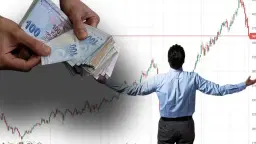If the downturn in the index is over, is this sufficient evidence that economic recovery has started as of the second quarter?
Figures suggest that first quarter’s annual growth rate will be below 2 percent. The pace of credit growth has started to rise again. At first glance, the upwards trend in credit growth as of April might give the implication that growth performance in Q2 will be different from that in Q1. But a deeper look proves this presumption wrong, for two reasons: first, we must expect a certain delay in the translation of the rise in credit growth into a recovery in industrial output via investment and consumption. Second one is about the movements in the leading indicators released by the Central Bank, which I will address on Thursday.
The latest leading indicator available is for May. Leading indicator has the ability to signal in advance the industrial output cycles as well as gross domestic product (GDP) cycles. For example, leading indicator peaks and then starts to fall before the time when the GDP growth rate (or industrial output growth rate) peaks and then enters the slow growth/contraction phase, vice versa. Similarly, leading indicator hits the trough before the GDP growth rate (or industrial input growth rate) does so.
Figure 1 illustrates the mentioned relationship. It shows annual percentage increases in industrial output index and six-month percentage changes in the index value. Here, let me note that researchers of the Central Bank of Turkey state that generally six-month changes provide earlier signals. Those who are interested can access a related study on the Bank’s website (study by A. Atabek, E. Coşar and S. Şahinöz, 2005). There is a strong relation in the same direction between the two indicators. More importantly, though we address a quite short period here, please note that the leading indicator index “turns” earlier than the industrial output. The study I mentioned involved details on the performance of the leading indicator for giving early signals.
The leading indicator has been decreasing for some time now. There is quite a weak signal that this movement has come to a halt by February 2012 and there is sort of a slight recovery starting thereon. Yes, “sort of” and “slight” at the same sentence. The index value for May was recently announced. The recovery was much more evident in April. Therefore, same warning applies here, too: we need to keep calm and avoid excitement right after a trend observed only for a couple of months. This is why I was vague in my comments and was “skillful” enough to use the words “sort of” and “slight” in the same sentence.
But now I will stop acting “skillfully.” Although signals are remarkably weak, let’s assume that the downturn in the index is over. Is this sufficient evidence that economic recovery has started as of the second quarter? No, it is not. It is just a “leading” indicator, to begin with. Economic recovery takes place way after the recovery of the leading indicator. Of course, leading indicator can give a wrong signal from time to time. But not this time, I believe. I hope that I will be proven wrong and will have to write a commentary of confession.

Figure 1. Annual change in industrial output and six-month change in leading indicator index: January 2007 – May 2012 (%). Source: CBRT and TURKSTAT
This commentary was published in Radikal daily on 21.06.2012





